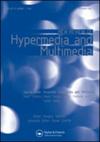社交媒体语境下的假新闻阅读与注释研究
IF 0.8
4区 计算机科学
Q3 COMPUTER SCIENCE, INFORMATION SYSTEMS
引用次数: 9
摘要
摘要假新闻的网络传播是威胁整个社会的一个重大问题。这种传播很大程度上是由新的媒体形式促成的,即社交网络和在线媒体网站。研究人员和从业者一直试图通过对假新闻进行定性并设计自动检测方法来回答这个问题。到目前为止,检测方法的成功率有限,主要是由于新闻内容和上下文的复杂性以及缺乏正确注释的数据集。提高自动错误信息检测方法效率的一种可能方法是模仿人类的检测工作。了解在线用户的新闻消费行为也很重要。在这篇论文中,我们提出了一项眼动追踪研究,在该研究中,我们让44名非专业参与者随意阅读社交媒体上包含新闻文章的帖子,其中一些是假的。在第二轮测试中,我们要求参与者决定这些文章的真实性。我们还描述了一项后续的定性研究,该研究采用了类似的场景,但这次有七位假新闻注释专家。我们介绍了这两项研究的描述、所得数据集的特征(我们在此发表)和一些发现。本文章由计算机程序翻译,如有差异,请以英文原文为准。
A study of fake news reading and annotating in social media context
ABSTRACT The online spreading of fake news is a major issue threatening entire societies. Much of this spreading is enabled by new media formats, namely social networks and online media sites. Researchers and practitioners have been trying to answer this by characterising the fake news and devising automated methods for detecting them. The detection methods had so far only limited success, mostly due to the complexity of the news content and context and lack of properly annotated datasets. One possible way to boost the efficiency of automated misinformation detection methods is to imitate the detection work of humans. It is also important to understand the news consumption behaviour of online users. In this paper, we present an eye-tracking study, in which we let 44 lay participants to casually read through a social media feed containing posts with news articles, some of which were fake. In a second run, we asked the participants to decide on the truthfulness of these articles. We also describe a follow-up qualitative study with a similar scenario but this time with seven expert fake news annotators. We present the description of both studies, characteristics of the resulting dataset (which we hereby publish) and several findings.
求助全文
通过发布文献求助,成功后即可免费获取论文全文。
去求助
来源期刊

New Review of Hypermedia and Multimedia
COMPUTER SCIENCE, INFORMATION SYSTEMS-
CiteScore
3.40
自引率
0.00%
发文量
4
审稿时长
>12 weeks
期刊介绍:
The New Review of Hypermedia and Multimedia (NRHM) is an interdisciplinary journal providing a focus for research covering practical and theoretical developments in hypermedia, hypertext, and interactive multimedia.
 求助内容:
求助内容: 应助结果提醒方式:
应助结果提醒方式:


